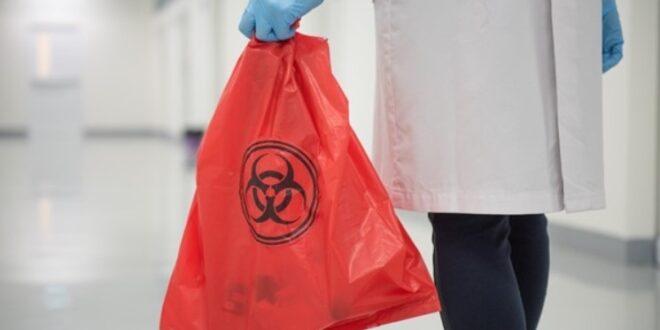Bloodborne pathogens are infectious microorganisms present in human blood that can cause disease in humans, making them crucial to address in workplaces.
Prioritizing workplace safety and preventing infections are essential for ensuring employee well-being and mitigating health risks.
This post will delve into understanding bloodborne pathogens, the risks involved, workplace settings at risk, OSHA regulations, prevention strategies, the role of training, and fostering a safety culture in the workplace.
Table of Contents
What Are Bloodborne Pathogens?
Bloodborne pathogens are harmful bacteria and viruses that live in the blood and other body fluids. Some prevalent examples include Human Immunodeficiency Virus (HIV), Hepatitis B (HBV), and Hepatitis C (HCV).
In workplace settings, transmission can occur through needlestick injuries, cuts from other contaminated sharps, or contact between broken skin and infected bodily fluids. Recognizing these pathways is pivotal for creating effective protective measures in work environments. For more information on these pathogens please visit https://cprcertificationnow.com/products/bloodborne-pathogens-certification.
Risks and Consequences
Exposure to bloodborne pathogens can pose significant risks, including severe health issues and chronic conditions. Infected individuals may experience prolonged suffering, facing physical and psychological challenges.
Moreover, employers may confront legal implications and reputational damage if worker infections occur due to non-compliance with safety regulations. Emphasizing prevention and proper handling of blood and bodily fluids is therefore imperative to avert detrimental consequences to both employees and organizations.

Workplace Settings at Risk
Certain workplaces inherently entail a heightened risk of exposure to bloodborne pathogens. Healthcare facilities, laboratories, and emergency response entities are prime examples due to the frequent interaction with blood and other potentially infectious materials (OPIM).
Both employers and employees in these sectors bear substantial responsibilities to uphold safety protocols and mitigate risks, promoting a secure and health-conscious working atmosphere.
OSHA Regulations and Compliance
The Occupational Safety and Health Administration (OSHA) plays a vital role in dictating standards for managing bloodborne pathogens. The Bloodborne Pathogens Standard (29 CFR 1910.1030) is a pivotal regulation designed to protect workers from the risk of infections.
Compliance with OSHA’s mandates is crucial for maintaining a safe working environment, averting potential hazards, and ensuring the well-being of employees within various professional settings.
Preventing Exposure
To counter exposure to bloodborne pathogens, adopting preventive measures is essential. Utilizing Personal Protective Equipment (PPE) like gloves, gowns, and face shields is crucial to safeguard individuals from potential infections.
Additionally, adhering to safe practices when handling sharps and contaminated materials significantly reduces the likelihood of exposure, fostering a secure and health-compliant workplace ecosystem.

Training and Education
Comprehensive education and training on bloodborne pathogens are indispensable components of workplace safety. Regular, informative sessions equip employees with the knowledge and skills needed to navigate environments with infectious risk efficiently.
Proper training empowers employees, allowing them to act conscientiously and protect both themselves and their colleagues from the threat of infectious diseases within the workplace.
Creating a Culture of Safety
Establishing a culture prioritizing safety is paramount for organizational success and employee welfare. Implementing strategies like continuous awareness campaigns and fostering accountability can substantially enhance workplace safety.
Such a safety-centric culture not only elevates productivity but also uplifts employee morale and well-being, contributing to the overall positive ambiance of the workplace.
 World Magazine 2024
World Magazine 2024






